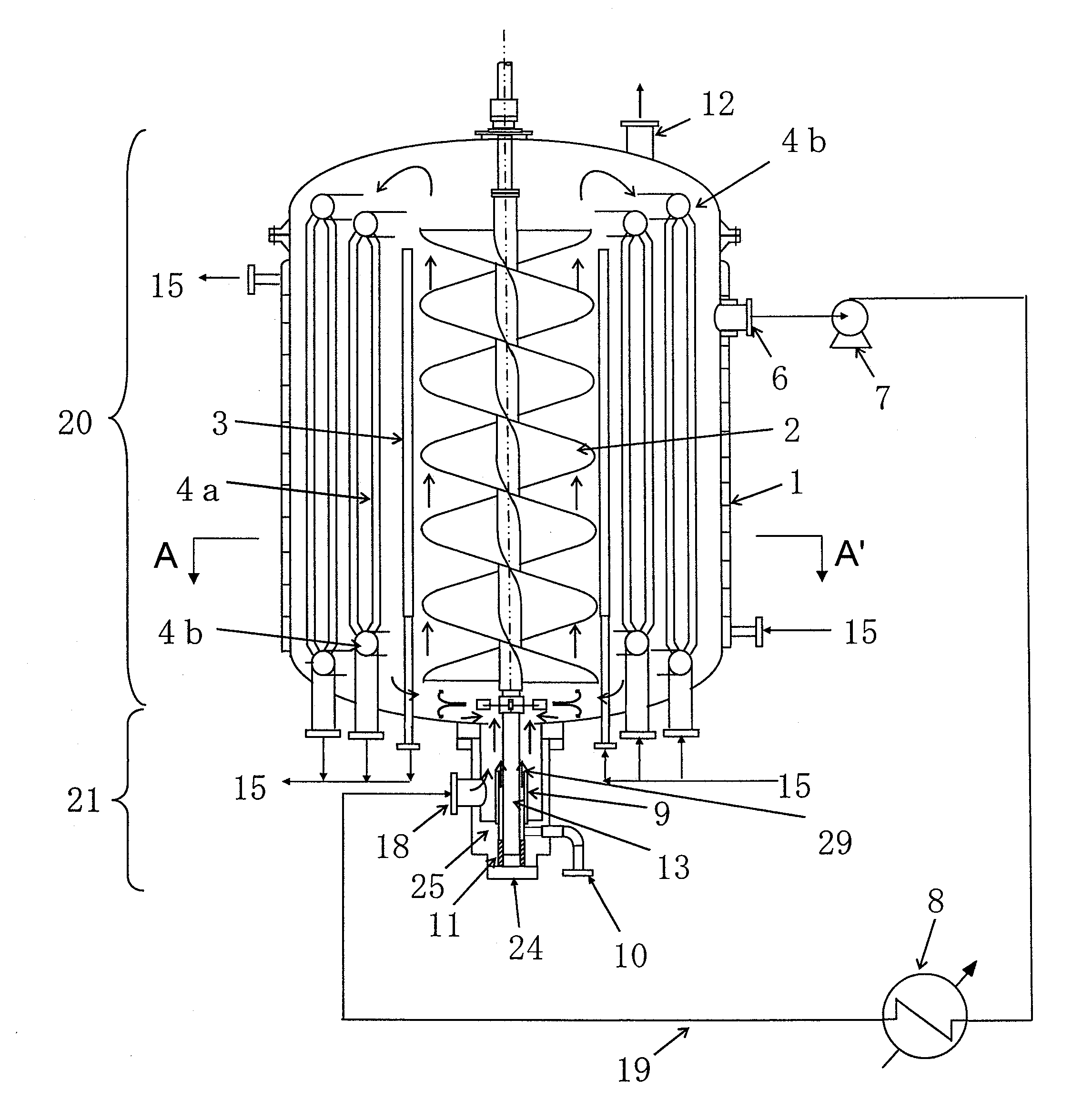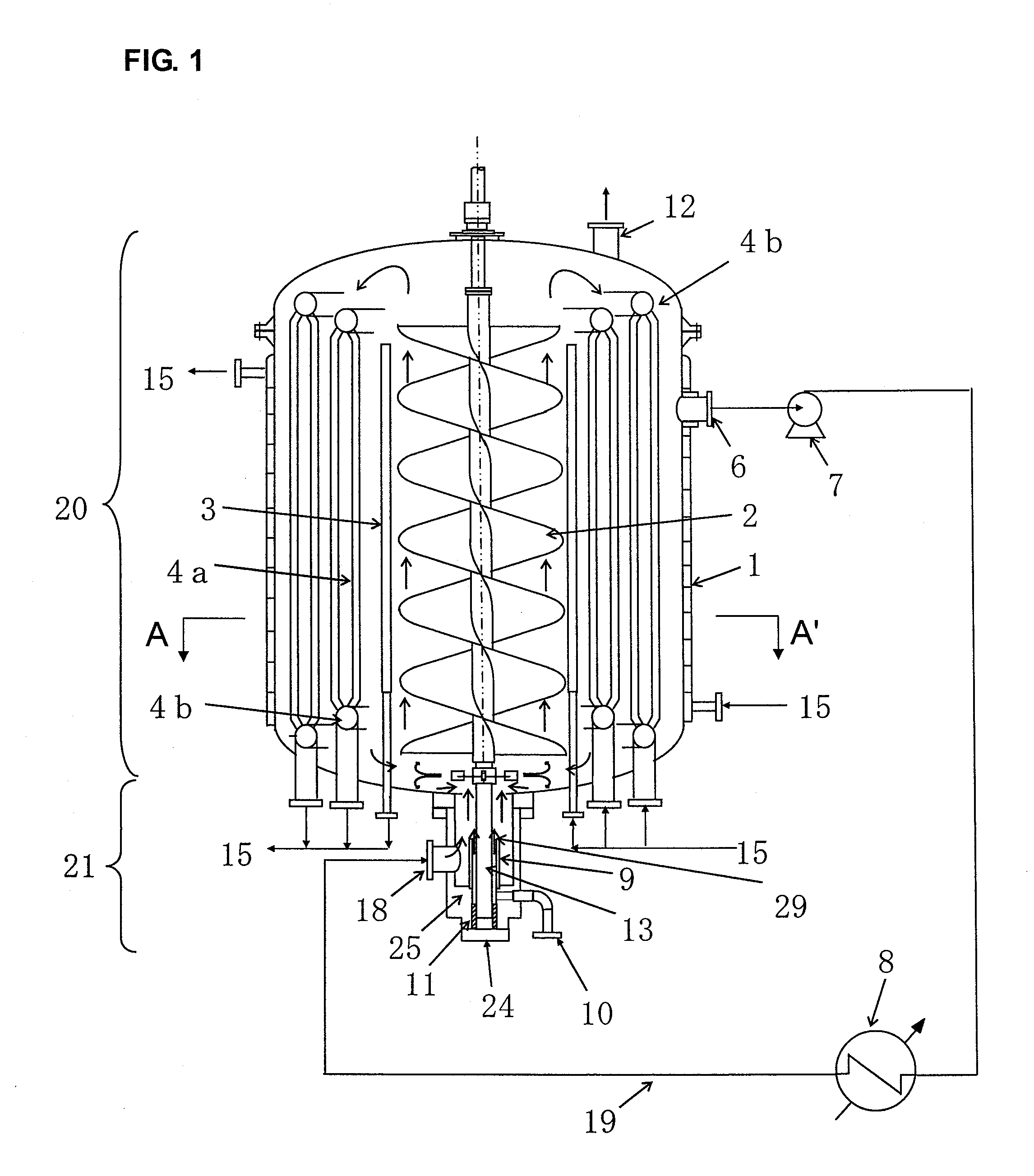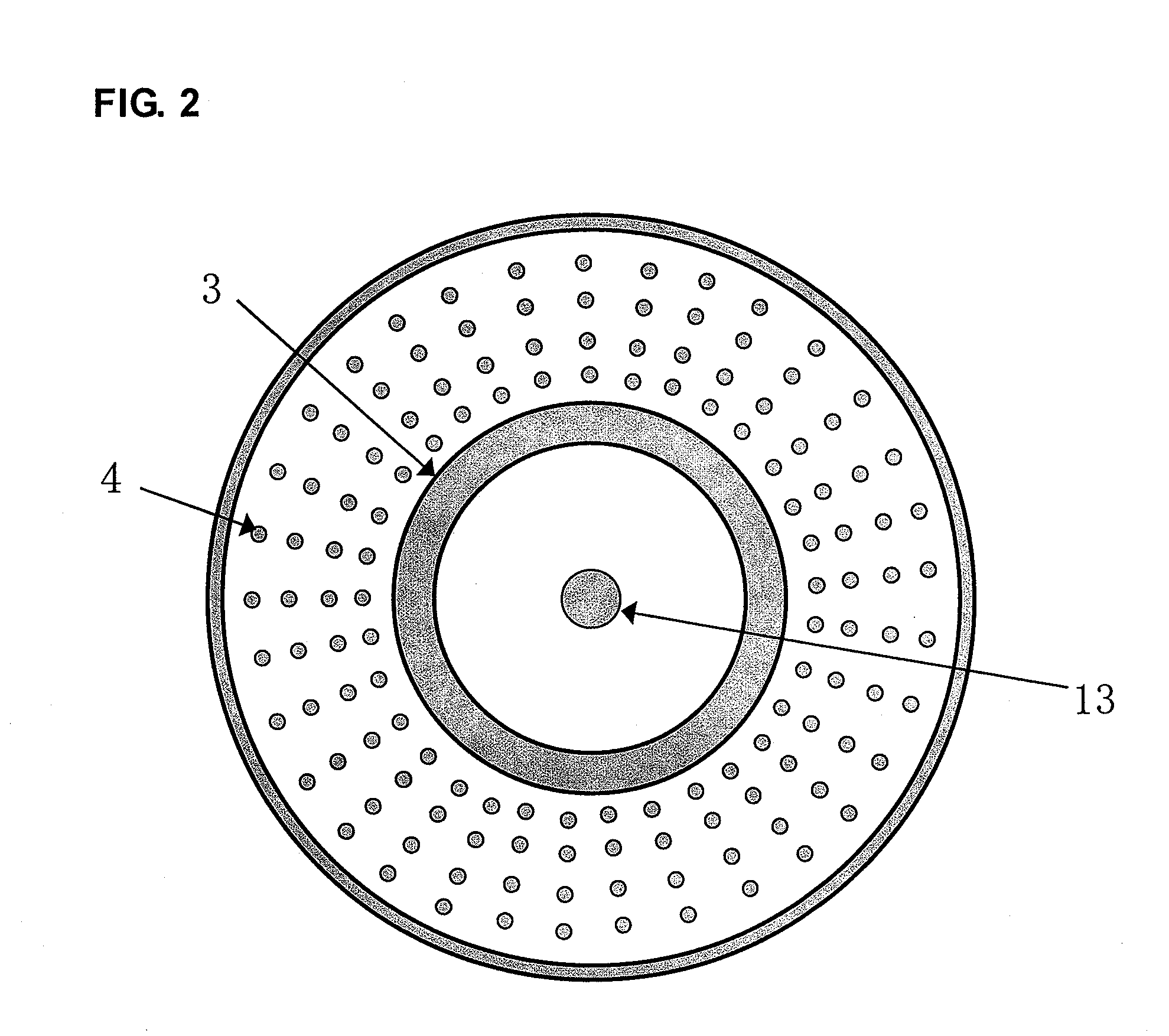Apparatus for manufacturing polymer resin, polymerization vessel, and method for manufacturing polymer resin
a technology of polymer resin and manufacturing apparatus, which is applied in the direction of transportation and packaging, chemical/physical/physico-chemical processes, and rotary stirring mixers. it can solve the problems of reducing the heat transfer area per unit volume of the polymerization vessel, the composition of a san thus produced is not uniform, and the manufacturing apparatus has been suffered a shortage of heat removal, so as to reduce the composition and temperature distribution of the polymer resin. , to prevent the bearing part from
- Summary
- Abstract
- Description
- Claims
- Application Information
AI Technical Summary
Benefits of technology
Problems solved by technology
Method used
Image
Examples
first embodiment
(First Embodiment)
[0067]FIGS. 1 and 2 illustrate one example of a manufacturing apparatus according to the present invention. FIG. 1 represents a side cross-sectional view of this manufacturing apparatus and FIG. 2 represents a cross-sectional view taken along the line A-A′ of the manufacturing apparatus illustrated in FIG. 1 (FIG. 2 represents only the basic configuration of the manufacturing apparatus illustrated in FIG. 1, and part of the structure thereof is excluded from the figure. In addition, the white area on the black background represents a portion filled with a polymerization solution). This manufacturing apparatus is formed with a polymerization vessel including main body 20 and protruding part 21 protruding downwardly from the bottom face of the main body. The lower part of this protruding part 21 is composed of bottom cover 24.
[0068]Above the main body of this polymerization vessel, there is installed an unillustrated driving part. In addition, agitation axis 13 is co...
second embodiment
(Second Embodiment)
[0115]The present embodiment relates to a pressure-releasing part for runaway polymerization reaction within a polymerization vessel. FIG. 6 illustrates one example of this manufacturing apparatus. In the present embodiment, unlike the first embodiment, the manufacturing apparatus includes rupture disk 5 in the upper part of main body 20 as a pressure-releasing part to be opened so as to depressurize the inside of the polymerization vessel when the internal pressure of the polymerization vessel is or exceeds a predetermined pressure. A nozzle and a depressurization apparatus, such as a remote-operated valve, may be formed as the pressure-releasing part in place of rupture disk 5. In addition, circulation pipeline 19 is connected to the side face of main body 20, and a height between the tangent line (TL) of main body 20 and the uppermost end of the inner wall of circulation pipeline 19 is 0.2 D or greater but not greater than 0.5 D, assuming the inner diameter of ...
third embodiment
(Third Embodiment)
[0122]The third embodiment shows one example in which a copolymer resin is used as a polymer resin. Many of copolymer resins feature rapid copolymerization reaction and high reaction heat. Thus, the copolymer resins have the characteristic that the internal temperature of the polymerization vessel tends to become high, and a temperature distribution within the polymerization vessel tends to become nonuniform. Accordingly, by using the manufacturing apparatus in accordance with the present invention, it is possible to remove the heat of polymerization generated by the reaction heat of the copolymerization reaction within the polymerization vessel and uniformly control the internal temperature of the polymerization vessel to within a desired temperature range. In addition, by injecting a low-temperature raw material for copolymer resin into the protruding part, it is possible to maintain the bearing part and the agitation axis at a low temperature. As a result, it is...
PUM
| Property | Measurement | Unit |
|---|---|---|
| temperature | aaaaa | aaaaa |
| temperature | aaaaa | aaaaa |
| temperature | aaaaa | aaaaa |
Abstract
Description
Claims
Application Information
 Login to View More
Login to View More - R&D
- Intellectual Property
- Life Sciences
- Materials
- Tech Scout
- Unparalleled Data Quality
- Higher Quality Content
- 60% Fewer Hallucinations
Browse by: Latest US Patents, China's latest patents, Technical Efficacy Thesaurus, Application Domain, Technology Topic, Popular Technical Reports.
© 2025 PatSnap. All rights reserved.Legal|Privacy policy|Modern Slavery Act Transparency Statement|Sitemap|About US| Contact US: help@patsnap.com



